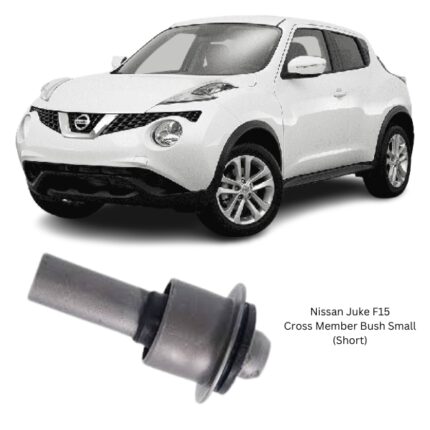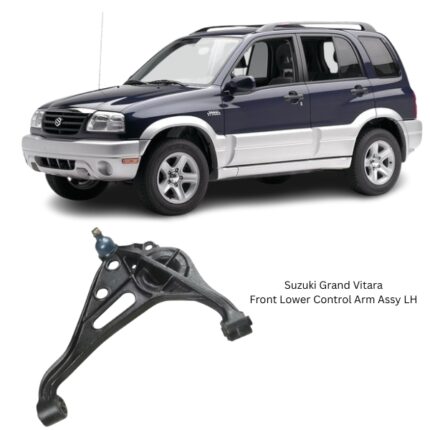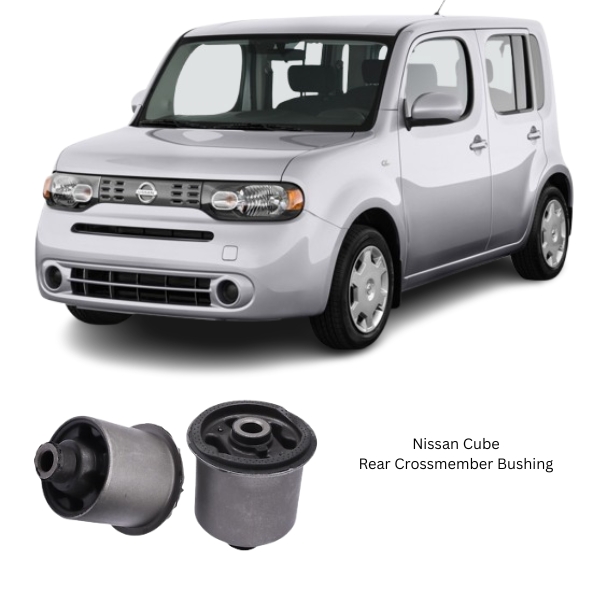Get Nissan Cube Rear Crossmember Bushing 55045-ED500 in Kenya
A Rear Crossmember Bushing plays a pivotal role in a vehicle’s suspension and chassis system. Despite its small size, this component is essential for maintaining structural integrity, comfort, and alignment between key suspension parts. It acts as a buffer between the rear crossmember—a rigid frame member that supports the rear suspension components—and the vehicle body or subframe, helping manage loads, absorb vibrations, and ensure smooth driving dynamics.
1. Purpose and Functionality
The rear crossmember bushing is engineered to perform several critical functions:
-
Vibration Isolation: It absorbs and dampens vibrations from the road surface, reducing the amount of shock transferred to the passenger cabin. Without it, the ride would feel harsh and uncomfortable.
-
Noise Reduction: It helps in minimizing noise generated by suspension movement or road impacts, contributing to a quieter and more refined driving experience.
-
Flexibility and Alignment: The bushing allows controlled movement between the crossmember and chassis, ensuring that the suspension geometry is maintained while still permitting a degree of flex needed for proper articulation.
-
Load Distribution: It helps distribute the forces and stresses exerted on the rear suspension system evenly across the crossmember, reducing wear and tear on other components.
-
Longevity of Suspension Parts: By cushioning metal-to-metal contact, it prolongs the life of the suspension system and adjacent parts.
2. Construction and Material Composition
Rear crossmember bushings are typically made using a combination of materials, each chosen to balance durability, elasticity, and resistance to environmental factors:
-
Rubber (Natural or Synthetic): The most common material. Offers excellent vibration dampening and cost-effectiveness.
-
Polyurethane (PU): Offers enhanced stiffness and durability over rubber, ideal for performance applications or harsh conditions.
-
Steel or Aluminum Sleeves: Encased within the rubber or polyurethane body to provide structure and support for bolts or bush retainers.
Some advanced designs may also include voids, grooves, or dual-material construction (like rubber bonded to metal) to fine-tune performance and allow more or less flexibility based on driving dynamics.
3. Location and Integration
The rear crossmember bushing is installed at the connection points between the rear crossmember and the vehicle’s chassis or subframe. Depending on the suspension layout, a vehicle may have two, four, or even more bushings. Their placement is symmetrical and precisely engineered to balance the suspension’s kinematics.
To access or replace the bushings, technicians typically need to lift the vehicle and detach the rear subframe, which can be labor-intensive depending on the design. Proper torque specifications and alignment are critical during reinstallation to avoid premature wear or misalignment issues.
4. Signs of Wear and Failure
Over time, due to constant exposure to road impacts, temperature fluctuations, and environmental contaminants like oil or road salt, rear crossmember bushings can degrade. Common symptoms of worn or failing bushings include:
-
Clunking or Knocking Sounds: Especially noticeable when going over bumps or during acceleration and braking.
-
Poor Handling and Stability: The vehicle may feel loose or unstable at the rear, especially during cornering.
-
Uneven Tire Wear: Misalignment caused by bushing wear can result in abnormal tire wear patterns.
-
Increased Vibrations: A worn bushing allows more vibrations to reach the chassis and cabin.
-
Visible Cracking or Deformation: On physical inspection, rubber bushings may appear cracked, split, or flattened.
Ignoring a failing rear crossmember bushing can lead to premature wear on other suspension components, misalignment, and a decrease in driving safety and comfort.
5. Replacement Considerations
When replacing a rear crossmember bushing, there are several important factors to consider:
-
OEM vs Aftermarket: Original Equipment Manufacturer (OEM) bushings provide exact fitment and performance as designed by the vehicle manufacturer. Aftermarket options can offer enhanced durability or performance (e.g., polyurethane), but may affect ride quality.
-
Pressing Tools: Removing and installing the bushing usually requires hydraulic or mechanical pressing tools. DIY replacements without proper tools can damage the new bushing or suspension components.
-
Alignment Post-Replacement: A wheel alignment is strongly recommended after bushing replacement to ensure proper suspension geometry.
-
Single vs Set Replacement: It is generally advisable to replace bushings in pairs or sets to ensure uniformity in suspension behavior.
6. Performance and Driving Impact
The performance of a vehicle is directly tied to the integrity of its suspension system, and the rear crossmember bushing plays a subtle yet significant role in that performance. Whether the vehicle is driven in urban conditions, off-road environments, or high-speed highways, this bushing helps maintain:
-
Straight-line Stability
-
Predictable cornering behavior
-
Effective braking response
-
Comfortable ride quality
In high-performance or heavy-load vehicles, upgraded bushings with stiffer compounds are often used to reduce unwanted flex, offering better feedback and control. However, these may increase road harshness.
7. Engineering Design Aspects
From an engineering standpoint, designing a rear crossmember bushing involves:
-
Load Calculations: Understanding the loads that the rear crossmember will experience under acceleration, deceleration, and cornering forces.
-
Material Fatigue Resistance: Ensuring the bushing material can withstand repeated compressive and shear forces over tens of thousands of kilometers.
-
Thermal Expansion Compensation: Some bushings are designed with grooves or expansion gaps to allow thermal movement without compromising integrity.
-
Durability Testing: Manufacturers subject bushings to intense lab and field testing including salt spray tests, vibration testing, and high-load impact cycles to guarantee long-term performance.
8. Maintenance Tips
To prolong the life of rear crossmember bushings:
-
Avoid aggressive driving over potholes, speed bumps, or uneven terrain.
-
Inspect regularly—particularly during suspension checks or tire replacements.
-
Address fluid leaks—oil or brake fluid can deteriorate rubber bushings.
-
Replace in pairs or sets to maintain uniform wear and handling.
Follow us on Facebook for more parts.





Reviews
Clear filtersThere are no reviews yet.